Retro Replay Review
Gameplay
China Syndrome delivers a tight, arcade-style challenge that hinges on precision timing and strategic resource management. You control a robotic arm tasked with intercepting and capturing radioactive particles across three distinct zones, each color-coded red, blue, and yellow. As particles descend, you must align the arm and press the action button at the exact moment to secure them before they fragment.
(HEY YOU!! We hope you enjoy! We try not to run ads. So basically, this is a very expensive hobby running this site. Please consider joining us for updates, forums, and more. Network w/ us to make some cash or friends while retro gaming, and you can win some free retro games for posting. Okay, carry on 👍)
The core loop is deceptively simple but grows in complexity as you advance through nine increasingly demanding levels. Delay or mistime your grabs and particles will split on collision with the zone boundaries, accelerating the reactor’s radiation buildup. Each mistake nudges you closer to meltdown, and losing a robot arm after too much radiation or colliding with moving fans ratchets up the tension.
To succeed, you’ll need to master quick reflexes and pattern recognition. Later stages introduce faster particles, erratic fan rotations, and tighter time windows, forcing you to think on your feet. The balance between frantic action and calculated risk makes each level feel like a pulse-pounding race against disaster.
Multiplayer isn’t supported, but the game’s high-score tables and escalating difficulty curve add a compelling replay value. Each run feels unique, and chasing personal bests or clearing all nine levels without losing an arm offers a rewarding challenge for competitive players. Whether you’re aiming for perfection or just surviving until level completion, the mechanical precision of the robotic arm feels remarkably responsive.
Graphics
Visually, China Syndrome embraces a clean, bold color palette that enhances both clarity and thematic urgency. The three horizontal zones—red, blue, and yellow—are vividly contrasted against a stark industrial backdrop, ensuring particles stand out against each layer. This deliberate design choice keeps the action readable, even as the speed picks up.
Particle animations are smooth and satisfyingly dynamic, with subtle trails that help you track their trajectories. The reactor control room environment is appropriately minimalistic, focusing attention on the falling particles and the mechanical arm. Fans and other hazards are distinct and easy to identify, preventing unnecessary frustration from unclear visuals.
While the aesthetic leans into retro arcade sensibilities, modern touches—such as smooth transitions, dynamic lighting effects around the reactor core, and subtle screen shakes when you’re close to a meltdown—elevate the presentation. These details create a sense of immersion without overcomplicating the visual design.
Performance is rock-solid across supported platforms. Frame rates remain stable even during the most chaotic sequences, and input lag is virtually non-existent, which is crucial for a timing-based game. Overall, the graphics strike an excellent balance between function and flair, ensuring you stay focused on the rescue mission without visual distractions.
Story
The narrative premise of China Syndrome is straightforward yet effective: a powerful reactor on Spectra Island teeters on the brink of catastrophe after an earthquake. Millions of residents depend on its power, and the fate of the island hinges on your ability to contain the radiation leak. This high-stakes backdrop injects urgency into each level.
Though there are no lengthy cutscenes or extensive dialogue, the story emerges through urgent status updates and escalating environmental hazards. Damage reports and system alerts punctuate the action, reinforcing the looming threat of a full-scale meltdown. This minimalist storytelling keeps the pace brisk while maintaining a sense of narrative tension.
The characters—namely the offscreen reactor engineers and the player-controlled robotic arm—aren’t given elaborate backstories, but that simplicity allows you to focus on the core gameplay. The reactor’s potential meltdown serves as a compelling motivator without bogging down the experience with unnecessary exposition.
China Syndrome’s story functions more as an atmospheric framework than a detailed saga. By avoiding heavy narrative detours, the game maintains its arcade intensity, ensuring every moment feels like a critical operation to save the island from disaster.
Overall Experience
China Syndrome offers an exhilarating blend of precision-based gameplay, vivid visuals, and tight pacing that will appeal to fans of arcade and puzzle-action hybrids. The learning curve is well-calibrated: newcomers can enjoy the early levels as they master the controls, while veteran players will find the later stages ruthlessly challenging.
The lack of traditional narrative weight is offset by the ever-present threat of reactor meltdown, fostering a consistent sense of urgency. Every grab attempt feels significant, and the consequences of failure—splitting particles, rising radiation, lost robot arms—keep the stakes high throughout.
Replay value is robust thanks to its high-score system, level-based progression, and the lure of flawless runs. Short play sessions are satisfying, and the game’s responsive controls ensure that each retry feels fair rather than punitive. Whether you’re in it to top the leaderboard or simply enjoy a dose of adrenalized action, China Syndrome delivers.
In summary, China Syndrome is a well-crafted, fast-paced experience that marries simple mechanics with high stakes. Its clear visuals, smooth performance, and relentless challenge make it a standout title for players seeking a compact yet intense arcade puzzle game. If you’re ready to pilot that robotic arm and avert nuclear disaster, this title is well worth your time.
 Retro Replay Retro Replay gaming reviews, news, emulation, geek stuff and more!
Retro Replay Retro Replay gaming reviews, news, emulation, geek stuff and more!
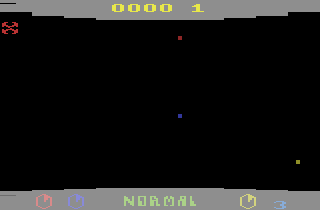
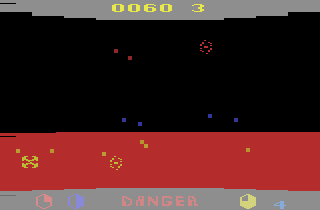
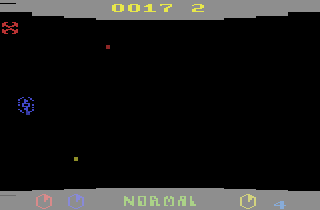
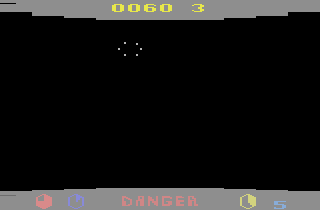
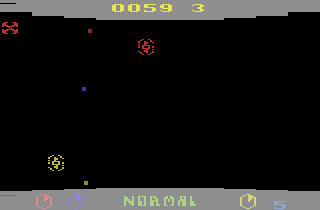



Reviews
There are no reviews yet.